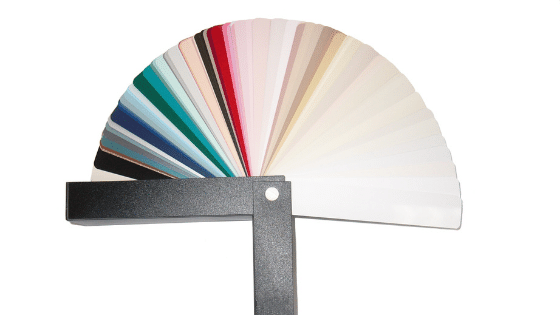
The purpose of anodizing aluminum is to form a layer of aluminum oxide that will protect the aluminum beneath it. Aluminum is a soft metal, and anodization is an electrochemical process that gives a metal surface like aluminum a decorative, durable, and corrosion-resistant finish, according to the Aluminum Anodizers Council (AAC). The aluminum oxide layer has much higher corrosion and abrasion resistance than the aluminum by itself. Anodized aluminum helps improve a product’s lifespan, durability, and aesthetics, among other benefits.
Anodized aluminum is used in a variety of consumer and commercial products and equipment. Anodized aluminum can be found in a wide range of end products, such as:
Aluminum is ideally suited to anodizing, although other nonferrous metals, such as magnesium and titanium, also can be anodized.
Kloeckner Metals is a full-line aluminum supplier and service center. Kloeckner Metals combines a national footprint with the latest fabrication and processing technologies and most innovative customer service solutions.
According to the AAC, anodizing is accomplished by immersing the aluminum into an acid electrolyte bath and passing an electric current through the medium. A cathode is mounted to the inside of the anodizing tank, and the aluminum acts as an anode. Oxygen ions are released from the electrolyte to combine with the aluminum atoms at the surface of the part being anodized. A process of highly controlled oxidation, anodizing is the enhancement of a naturally occurring phenomenon.
The anodizing step takes place in a tank that contains a solution of sulfuric acid and water. After anodizing is complete, the parts can be immersed in an optional coloring tank, to achieve a deep black tone instead of the standard clear or silver finish.
There are generally four methods for anodizing aluminum.
When a high-performance aluminum finish is needed, anodization fits the bill. Here are just a few of anodized aluminum’s benefits, according to the AAC:
The porous nature of aluminum oxide allows it to absorb dyes well, and subsequent sealing helps to prevent color loss in service. Some of the colors that can be applied to anodized aluminum include Black, Red, Blue, Green, Urban Grey, Coyote Brown, and Gold. Parts can be treated prior to anodizing to achieve a matte (non-reflective) finish.
Aluminum service providers will be able to provide you with a full aluminum anodized color chart but, in general, you will find a full array of anodized colors are available.

The following alloys of aluminum plate, aluminum tube, aluminum sheet, and aluminum bar are among those suitable for the anodizing process:
This series’ alloying constituent is manganese. When anodized, the alloys in the 5XXX series, such as 5052, have a resulting oxide layer that is strong and clear. Common products in this series include architectural, welding, and lighting applications.
The 6XXX series’ alloying constituents are magnesium and silicon. These alloys are excellent candidates for anodizing. The oxide layer that follows the anodizing process is transparent and offers excellent protection. Because the 6XXX series alloys, including 6061 (bar), 6061 (tube), 6061 (plate), 6063 (bar), and 6063 (tube), offer great mechanical properties and are readily anodized, they are frequently used for architectural and structural applications.
This series of alloyed aluminum uses zinc as its primary alloying element. It takes to the anodizing process very well. The subsequent oxide layer is clear and offers great protection. It’s commonly used in automotive applications.
Anodized aluminum is a highly specialized product with a lot of custom characteristics. Kloeckner Metals is proud to have trusted sources with whom we partner to create customized solutions for our customers who need this type of service.
Kloeckner Metals is a full-line aluminum supplier and service center. Kloeckner Metals combines a national footprint with the latest fabrication and processing technologies and most innovative customer service solutions.

Steel base plates are fundamental elements employed in various manufacturing...
Metal fabrication is a critical process that transforms raw metal...
The solar industry has undergone a significant transformation by incorporating...

X
The Kloeckner Metals website uses modern technologies. Unfortunately, your browser doesn't support those technologies.
Download the latest version of one of these browsers to experience the site: